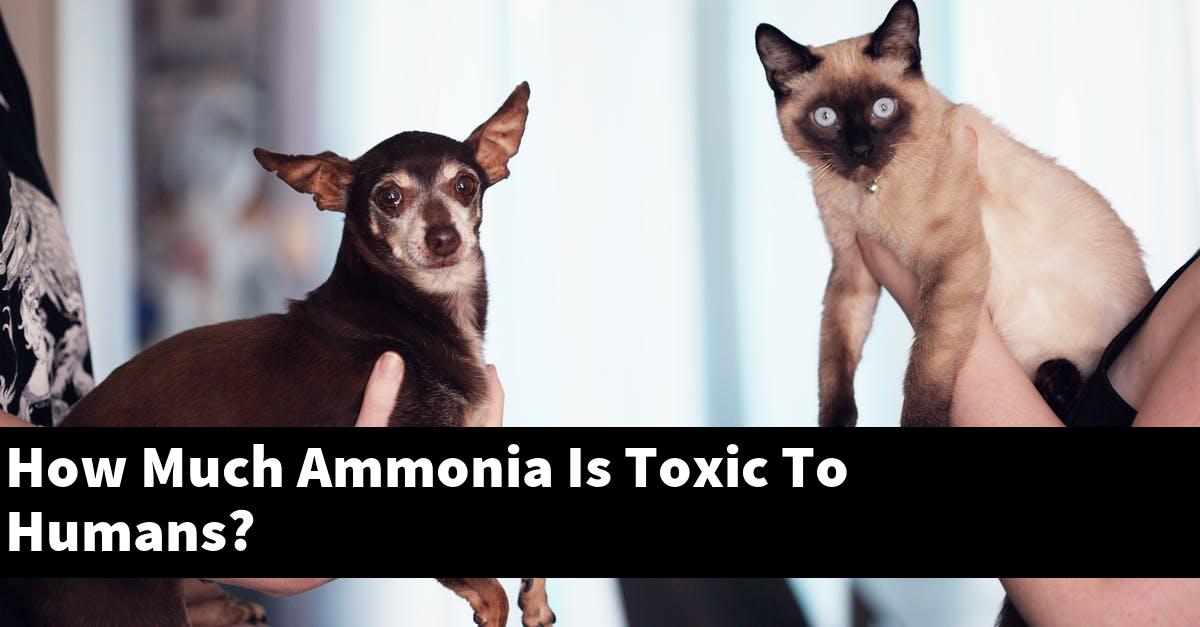Ammonia is a colorless gas with a strong, pungent odor. It is a compound of nitrogen and hydrogen, and is found in small amounts in the atmosphere.
Ammonia is also produced by the decomposition of organic matter, and is used in many industrial processes.
Ammonia is toxic to humans in large concentrations. Inhaling high concentrations of ammonia can cause irritation to the eyes, nose, throat, and lungs.
High concentrations can also lead to coughing, choking, and difficulty breathing. In severe cases, ammonia inhalation can cause death.
What is a safe amount of ammonia?
Ammonia is a chemical that is used in fertilizer, cleaning products, and other industrial applications. It is a colourless, water-soluble gas.
Ammonia is toxic if inhaled or ingested. The Occupational Safety and Health Administration (OSHA) has set a limit of 0.5 milligrams per cubic metre of air as the permissible exposure limit (PEL) for ammonia.
The National Institute for Occupational Safety and Health (NIOSH) has set a lower limit of 0.1 milligrams per cubic metre of air as the permissible exposure limit (PEL) for ammonia.
Is ammonia toxic in small amounts?
Ammonia is not toxic in small amounts. However, ammonia can be harmful if it is breathed in or if it is touched.
Ammonia can cause irritation to the eyes, nose, and throat.
Can humans ingest ammonia?
Yes, humans can ingest ammonia. Ammonia is a naturally occurring compound found in many foods and beverages.
Ingesting small amounts of ammonia is not harmful, but large amounts can be poisonous.
What happens if ammonia is ingested?
Ammonia is a gas that is produced when organic material breaks down. It can be inhaled and can cause serious health problems if it is breathed in deeply or if it is absorbed through the skin.
Symptoms of ammonia poisoning can include nausea, vomiting, diarrhea, and even death. If you are exposed to ammonia, it is important to seek medical attention right away.
Is 1 ppm of ammonia high?
Ammonia is a common building block of organic matter. In the environment, ammonia is converted into nitrogen gas through the process of photosynthesis.
Ammonia levels in the environment are typically low, typically around 0.1 ppm. Levels above 1 ppm are considered high.
How long does ammonia poisoning last?
Ammonia poisoning can last from several hours to several days. Symptoms of ammonia poisoning can include dizziness, nausea, vomiting, abdominal pain, and confusion.
If left untreated, ammonia poisoning can lead to coma and death.
How do you get ammonia out of your lungs?
Ammonia can be breathed in and can cause respiratory problems. The body can remove ammonia from the lungs by using the Ammonia-Lung Mechanism.
Why ammonia is toxic to brain?
Ammonia is toxic to the brain because it can damage cells in the brain. Ammonia can also damage the nerves that connect the brain to other parts of the body.
What happens if you drink ammonia and bleach?
Ammonia and bleach are both strong oxidizers. When mixed together, they form a powerful mixture that can damage tissue and DNA. The most serious side effect of drinking ammonia and bleach is acute renal failure.
What neutralizes ammonia?
Ammonia is a common environmental pollutant. It is a by-product of the burning of fossil fuels, the manufacture of certain chemicals, and the decomposition of organic matter.
Ammonia can also be released from waste management and agricultural processes.
There are several methods for neutralizing ammonia. One is to use water to dilute the ammonia until it no longer presents a threat to public health.
Ammonia can also be neutralized using activated carbon. Activated carbon adsorbs ammonia and other pollutants, and the carbon can be released when the ammonia is heated.
Conclusion
Ammonia is a colorless gas with a strong, suffocating odor. It is highly soluble in water and forms corrosive bases.
Ammonia is toxic to humans in large concentrations and can cause death. Inhalation of high concentrations of ammonia can lead to pulmonary edema and death.


